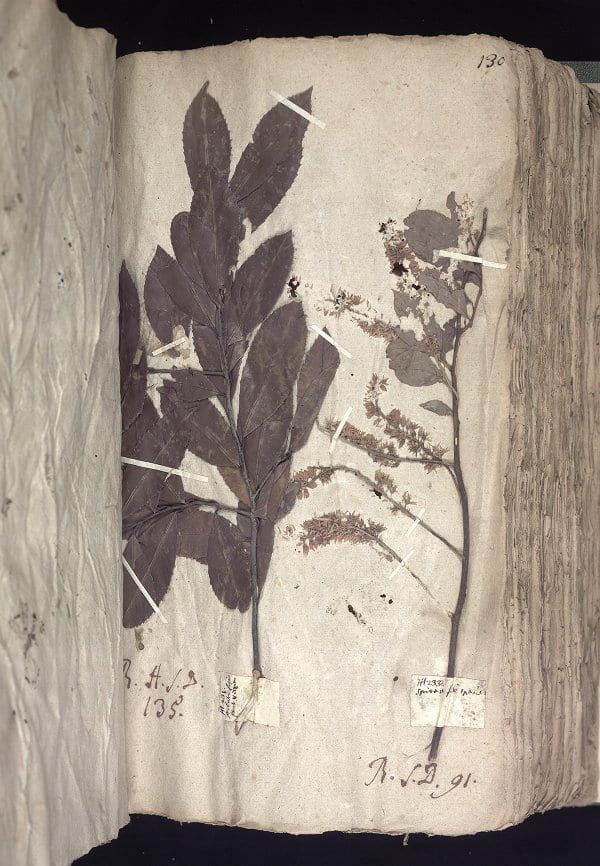by guest contributor Brooke Palmieri
Imagine that an archivist’s child is raised from birth as a professional archivist to see how they documented their life. Imagine that toddler making a finger painting, taking a digital image, filing away the physical copy into an acid-free folder, alerting its parents as to the proper terms from the Dublin Core Metadata Initiative, uploading it to Omeka. Even with training from birth by archivist parents, decisions would be made about what to keep as much as what to discard, how to form an archive from preservation as well as loss. Maybe there would be moments of sabotage, like the burning of notebooks filled with teenage poetry. The experiences that matter most in life would be over-represented, like vacations.
Or imagine Beyoncé’s “Crazy Archive”: it includes every photograph, interview, and performance she’s ever done, combined with tens of thousands of hours of footage. Unlike most, Beyoncé has the resources to employ “visual directors,” who have documented every day of her life since 2005.
Neither example provides total recall, but rather a lesson in managing expectations: all archives are meant to include just what they include, and it’s only the expectations of outsiders that find fault or shortcomings in their contents. For example, it is likely that scholars in days to come will ask: what did Beyoncé do every day of her life before 2005, before the birth of her daily archive?
Either way, experimenting on children or following the example of Beyoncé is the closest we could get to a true “archival agenda” shaping the product, rather than some other agenda that happens to manifest as an archive. Which is to say that there is no such thing as an archive that is first and foremost archival. Archives are secondary in nature, and that isn’t necessarily a bad thing: it doesn’t take away from their importance in preserving heritage, nor does it make reading their contents any less empowering or infuriating or educational. Which brings us to the archives of scientists, and an excellent conference that was held on 2 June at the Royal Society: “Archival Afterlives: Life, Death, and Knowledge-Making in Early Modern British Scientific and Medical Archives.”
One of the most important remarks made in the conference was by Victoria Sloyan, an archivist at the Wellcome Library. When asked about the contents of the Collecting Genomics Project, which brings together born-digital contents from a number of different scientists from different institutions who were part of the Human Genome Project, Sloyan stressed that different people have different ideas of what an archive should contain, and act accordingly. Some scientists hand everything over; some preserve only evidence enough to trace the the progress of “successful” ideas. In practice, individual archives fall somewhere between these extremities, but such decisions haunt the work of anyone accessing their material.
Theoretically, not much has changed between Sloyan’s very contemporary moment of archival collection, highly transparent in its obstacles (including born-digital material and a whole lot of floppy disks), and those of scientists past. The multiplication of media platforms has multiplied the kinds of things that can be found in the archive, and the trouble it takes to get them there, but human emotions around the preservation of knowledge only have so many expressions. It was useful then, as the conference did, to ask: “How did disorderly collections of paper come to be the archives of the Scientific Revolution?” Presentations sought to examine the many factors baked into the survival of archives: for instance, Elizabeth Yale looked at the “entanglement of emotion and paper” that is the naturalist John Ray’s archive. Its survival depended on his wife and daughters and the relationship his publishers maintained with them, but also the significance of his biographer Samuel Dale’s role in establishing a legacy for Ray. That legacy also happened to include rewriting and recasting Ray’s lifelong religious beliefs from nonconformist to Church of England.
This is easier to stomach within the libraries and archives of the humanities: we have long sought to make silences speak, fill the gaps between shortcomings, question received truths and their canonical authors. For decades, the dialectic of the humanities archive has been between preservation and loss, histories from above and histories from below. By contrast the dialectic of the scientific archive tends to formulate itself as objectively observed rather than subjectively felt. Conferences like “Archival Afterlives” implicitly fire the opening shots in a bigger battle to knock the sciences down a peg, to reframe the argument as one familiar to humanities classrooms, as something we’ve known all along. The information of scientific archives is more likely to be medical, natural, or celestial, symptoms of disease, fossils, planetary angles—but that makes it no less subject to the inherent distortion of human intervention.

A page from James Petiver’s herbarium (c. 1718), featuring specimens of the Carolina Laurel Cherry (Prunus caroliniana Aiton) and the Virginia Willow (Itea virginica L.). (East Carolina University Digital Collections)
In his presentation, Arnold Hunt completely recovered the reputation of James Petiver, dragging him out from the shadow of Hans Sloane and piecing together his dispersed archive and natural history collection to show a methodical, self-taught collector of high quality: only his humble beginnings had caused him to be dismissed as a serious naturalist thinker. In other words, religion, politics, and class have always mediated admittance to the pantheon of thinkers we exalt. And if contemporary circumstances were not enough of a minefield for the archival process, Leigh Penman’s presentation created fresh dangers. His work on Samuel Hartlib’s papers highlighted the formative role of loss: “all his best papers” had “suffered… embezzlement” in Hartlib’s lifetime, including his universal bibliography, meaning that what survives is a collection of “loose papers” of little value to Hartlib himself.
Overall, “Archival Afterlives” subjected scientific knowledge to the more elemental truth: that every archive is an afterlife. Despite the many uses and transmissions of archival information, we cannot forget that there was a first purpose, an initial passion, and a strategy for survival that saw the production and persistence of an archive, and that sets a path for possible uses afterward. The archive begins as the residue of some encounter or event, and only later does it accrue layers of meaning through varieties of use. Maybe this is one of the greatest paradoxes of endurance: renewed interest in mining the archives ensures their survival, both as cited sources and as bodies of material that require funding to remain intact, but at the same time, new agendas have a tendency to obscure old ones, and it’s the old ones that archives have a difficult time preserving. Nevertheless, it is crucial to work to understand their occult influences over the shape of the historical record as much as the scientific record. The first step in doing so is in making the archival agenda visible. Otherwise, we risk misidentifying invisibility as infallibility.




July 13, 2015 at 8:18 am
What a great post, and what a great conference! Related events and enterprises are taking shape in many places and learned cultures: for example, the Max Planck Institute for History of Science in Berlin, where the beginning of July saw this very rewarding workshop take place: http://www.mpiwg-berlin.mpg.de/PDF/2015_07_02_Practices_of_Historical_Research_Flyer.pdf, and Cambridge, where the Notebooks Network is convening another workship as I write: http://notebooks.hypotheses.org/workshops/notebooks-medicine-and-the-sciences-in-early-modern-europe/programme. It’s bracing to see the archive and the practices of its making and use become the objects of such intense and skillful scrutiny, and to join in the process of learning to avoid the systematic error Brooke identifies so precisely: “misidentifying invisibility as infallibility.”
July 13, 2015 at 8:22 am
I couldn’t agree more! It was a pleasure to edit Brooke’s great post. And readers might wish to stay tuned for next week’s post by me, which (provided that I manage to write it on time) will further explore questions about how to read archival gaps and silences.
July 13, 2015 at 8:23 am
Sorry, the Notebooks network workshop in Cambridge took place a couple of years ago! Gotta watch that metadata! All the fault of the ring of criminals who work in this evil place:
/Users/grafton/Desktop/Cafe des Faussaires.jpg
July 13, 2015 at 8:50 am
Thanks Tony & Emily — and thanks for the additional links, which I will add to:
I ran a ‘Failure in the Archives’ conference last year (https://failureinthearchives.wordpress.com), and before that there was the “Transforming Information: Record Keeping in the Early Modern World” (http://www.britac.ac.uk/events/2014/Transforming_Information.cfm) at the British Academy.
I think all this highlights a healthy trend: we’re combining theories OF archives that have long been part of the postmodern humanities required reading list (Derrida, Foucault, etc) with actual work IN archives.
It’s happening in history departments I think as a way to overcome the crippling paralysis that theory places on historical work (thanks Hadyn White) while exalting in the fact that, if you try to combine theory with material traces & the practices they suggest, the picture is actually too complicated for even philosophies of history to contain. That’s a very exciting prospect for civilisation I think.
July 13, 2015 at 8:49 am
Thanks Tony & Emily — and thanks for the additional links, which I can add to:
I ran a ‘Failure in the Archives’ conference last year (https://failureinthearchives.wordpress.com), and before that there was the “Transforming Information: Record Keeping in the Early Modern World” (http://www.britac.ac.uk/events/2014/Transforming_Information.cfm) at the British Academy.
I think all this highlights a healthy trend: we’re combining theories OF archives that have long been apart of the postmodern humanities required reading list (Derrida, Foucault, etc) with actual work IN archives.
It’s happening in history departments I think as a way to overcome the crippling paralysis that theory places on historical work (thanks Hadyn White) while exalting in the fact that, if you try to combine theory with material traces & the practices they suggest, the picture is actually too complicated for even philosophies of history to contain. That’s a very exciting prospect for civilisation I think.